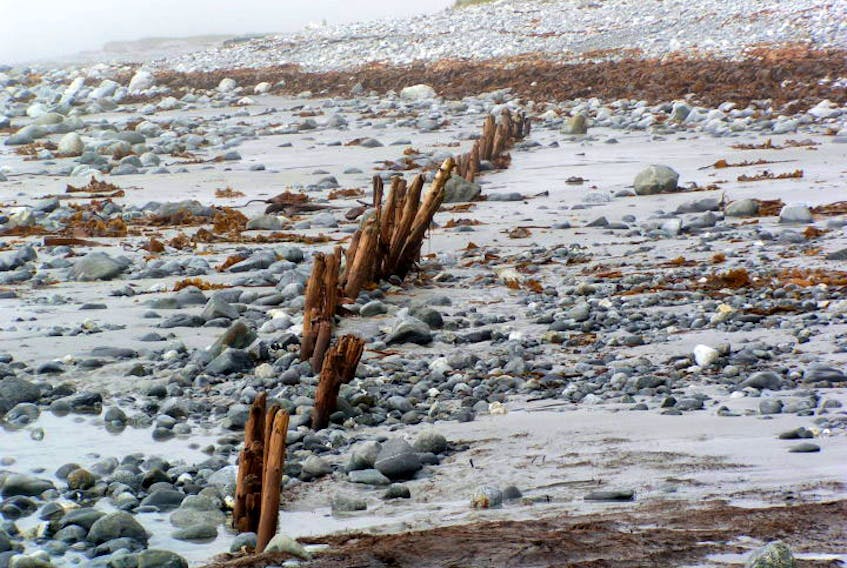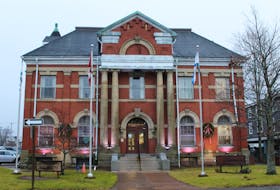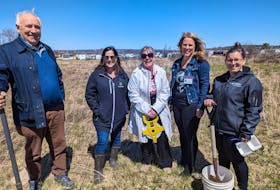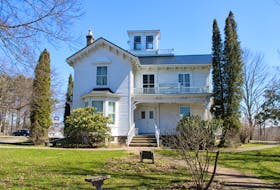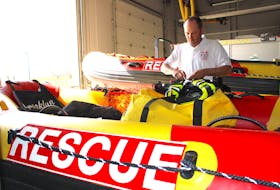CAPE SABLE ISLAND, N.S. – For years it’s been a mystery – the remains of some sort of man-made wooden structure protruding out the sand at The Hawk Beach, near the drowned forest, which holds its own secrets.
By the end of August, archaeologist and Memorial University graduate student John Campbell hopes to have solved the puzzle.

Campbell, who is involved with the archaeology dig at nearby Fort Saint Louis, was first told about the structure on Cape Sable Island last year by local residents.
“It was too much of a mystery to pass up,” he said in an interview during a break from digging at the Fort Saint Louis site. “It’s certainly something that needs to be explored and I think it’s something the community wants to know, what this head scratching puzzle is?”
Campbell will be conducting an archaeology dig at The Hawk Beach on Cape Sable Island from Aug. 12 to 25.
“It’s quite a mystery. It’s a very interesting structure,” he said. Besides the “obviously man-made structure in the beach,” Campbell says there is “an associated hill to it that seems to be part of an entire area of activity, some sort of marine focused or marine oriented practice.”
“Again, we don’t have a perfect idea of what that practice might be,” he said. “That’s why we’re excavating for the two weeks in August.”
Campbell said he was alerted to the “interesting little hill structure behind the cobble beach in a marsh area” by one of the local people on the Cape Sable Island.
“When I went to do the analysis, I find there is a perpendicular cobblestone portion or feature that lines up exactly with a gully or a little ravine in the hill so there’s certainly something going on there.”
Campbell said he has done some analysis using UAV photogrammetry and it was “determined by myself and some other archaeologists it seems to be related” to the structure on the beach. “It seems to be one full area of activity,” he said.
Where the structure is located below the high-water mark, Campbell said the intertidal excavation part of the archaeology dig will be a very brief excavation.
“What we’ll do is set a one-metre-wide trench and do metal detection and surface survey and mapping in the feature itself and we’ll excavate high potential areas that are determined by metal detection or just knowledge of the area and the structure itself,” he said. “Those will be done at low tide in a very quick and precise methodological manner, but the majority of the excavation will be focused on the hill just behind the intertidal structure itself.”

Besides a metal detector, Campbell will be using real time kinematic (RTK), which he describes as “a very fancy gloried GPS system that can mark out and map the entire site within an hour so. It just makes the process very expedient.”
This is the third time The Hawk Beach structure has been looked at, archaeologically speaking, said Campbell, with surveys done in 1996 and 2013. This will be first time it has been excavated.
Speculation has ranged over years what the structure might have been; from part of a French fort to the remains of a sheep pen.
“Personally, I would like it to be from the late 16th century to the early 18th century. I’m thinking that timeframe,” said Campbell. “Cultures, on the other hand, could range from Basque, Portuguese, English being New Englander, French or Dutch. At this moment there so much of an interesting collection of culture down there and trying to determine what has washed up and what is part of the structure is hard to tell.
Campbell predicted within the first week they’ll be able to figure out what culture it is.
Campbell will be joined by volunteers from the Nova Scotia Museum as well as archaeologists from the private sector and academia during the two-week dig. Depending on what is found, Campbell said the dig could potentially go towards his dissertation work, depending on what comes out of it.
“I’m really hoping 17th century or earlier. That would be very interesting and really works towards my dissertation,” he said. “If it’s not within the realm of the dissertation I will write a report on it and try and publish an article to make sure its documented. I’m looking forward to the dig. It’s only two weeks but we will find out what it is.”
Campbell said he is also hoping to set up an exhibit of The Hawk in a similar fashion as the Fort Saint Louis exhibit, which is located for the summer at the Cape Sable Historical Society’s Old Court House museum and genealogy research center.
As for the Fort Saint Louis dig, things are going well, said Campbell. In its second year, the Fort Saint Louis dig is being led by Dr. Katie Cottreau-Robins, Curator of Archaeology for the Nova Scotia Department of Communities, Culture and Heritage. People can track the progress of that dig online through Instagram on the Nova Scotia Museum website at: https://museum.novascotia.ca/blog/fort-saint-louis-archaeological-excavation


